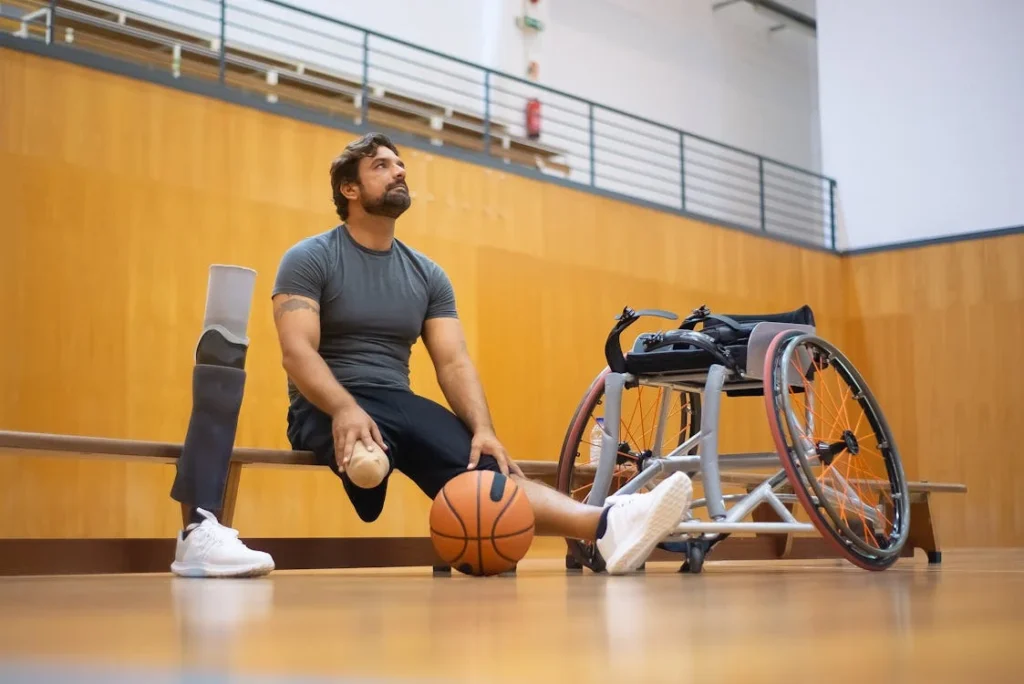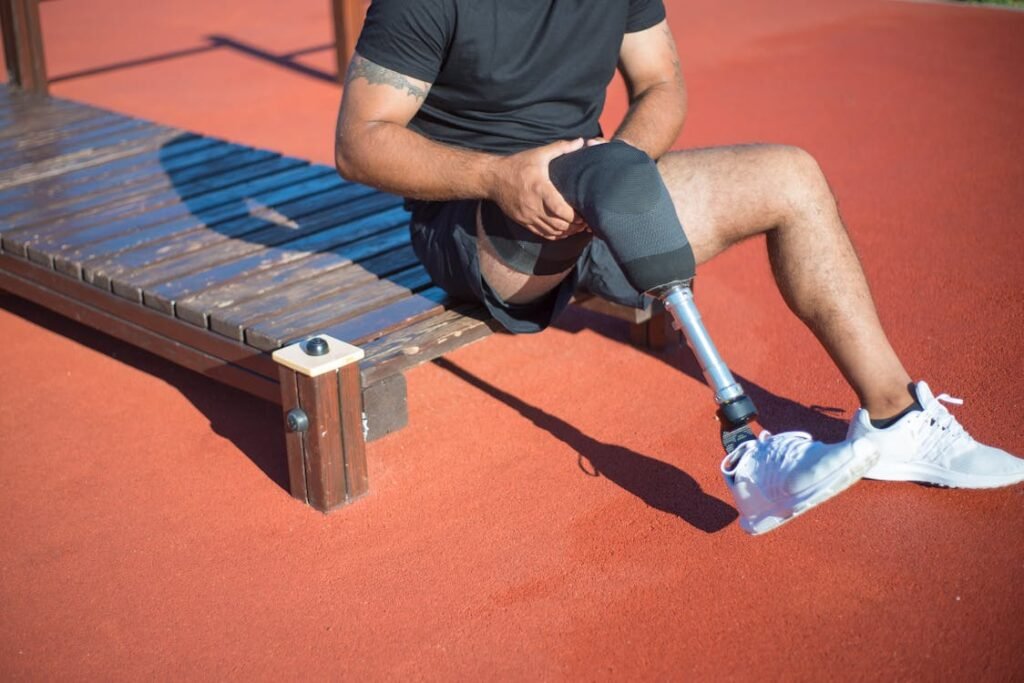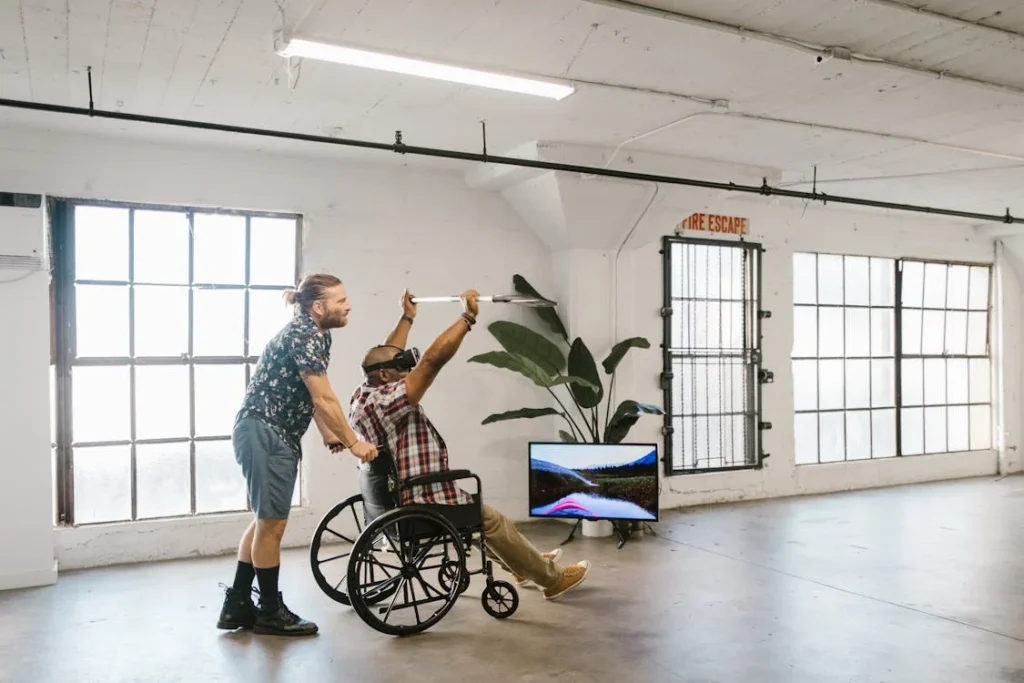Every parent wants the best for their child, especially when it comes to their health and well-being. If your child is missing a limb, you may be wondering if a bionic limb is the right choice. You’ve probably heard about advanced prosthetics that move like real arms and legs, but is this technology the best option for kids?
Choosing a prosthetic for a child is different from choosing one for an adult. Kids are always growing, exploring, and pushing boundaries. They need a solution that keeps up with their energy, supports their development, and helps them live confidently. Bionic limbs can be an exciting option, but they also come with factors that parents should carefully consider.

Understanding Bionic Limbs for Kids
Bionic limbs are prosthetic devices that use advanced technology to replicate natural movement. Unlike traditional prosthetics, which are mostly passive or body-powered, bionic limbs use sensors and electronic components to respond to muscle signals.
This means that when a child thinks about moving their bionic hand or leg, the limb detects these signals and translates them into movement. Some bionic limbs even have sensory feedback, allowing the user to “feel” textures, pressure, or vibrations.
For children, a prosthetic is more than just a tool—it is a part of their body. Kids are naturally curious and active, which means their prosthetic needs to keep up with their rapid growth and high energy levels.
A good bionic limb should be comfortable, easy to use, and adaptable as they grow. It should also support their everyday activities, from playing sports to completing schoolwork, without feeling like a limitation.
How Do Bionic Limbs Work?
Bionic limbs function by detecting electrical signals from the muscles. These signals are sent to small processors inside the prosthetic, which then control the movement of the artificial limb. This process, known as myoelectric control, allows for a more natural and intuitive experience.
For example, if a child with a bionic hand wants to pick up a toy, they simply think about closing their fingers. The sensors in the prosthetic detect the muscle activity and respond by moving the fingers accordingly.
Over time, children can learn to control their bionic limbs with precision, just like using their natural limbs.
Some advanced bionic limbs even have artificial intelligence (AI) that helps improve movement over time. These systems can learn from the user’s patterns and adjust accordingly, making the prosthetic feel more natural and responsive.
The Adaptability of Bionic Limbs for Growing Children
One of the biggest challenges for kids using prosthetics is growth. Unlike adults, children’s bodies are constantly changing. This means their prosthetic limb must be adjustable or easily replaced as they grow.
Some bionic limbs are designed with modular components, allowing certain parts to be swapped out without needing an entirely new device.
The frequency of adjustments depends on the child’s age. Younger children may need replacements more often, while older kids can use their prosthetics for longer periods before needing an upgrade.
Parents should be prepared for these adjustments and work with prosthetists to ensure a proper fit.

Benefits of Bionic Limbs for Kids
Bionic limbs offer several advantages that can greatly improve a child’s quality of life. They are designed to provide greater independence, enhance confidence, and help kids engage in daily activities with ease.
Unlike traditional prosthetics, which can be restrictive, bionic limbs allow for more natural movement, making tasks like holding a pencil, eating with utensils, or even playing sports more manageable.
A major benefit of bionic limbs is that they help children feel more in control of their own movements. Many kids with limb differences may experience frustration when they cannot perform certain tasks as easily as their peers.
A bionic limb bridges this gap, allowing them to do things they might have struggled with before. Over time, as they get better at using their prosthetic, they develop a sense of independence that builds confidence.
Another important advantage is social acceptance. Kids can sometimes feel self-conscious about their prosthetic limb, especially if it looks very different from a natural arm or leg.
Bionic limbs, however, often have a futuristic and high-tech appearance, which many children find exciting. Instead of feeling different in a negative way, they may see their prosthetic as something unique and special.
Some bionic limbs even come with customizable colors and designs, making them feel more personal.
Bionic technology can also support a child’s physical development. When a child is missing a limb, their body naturally adapts by relying more on their remaining limbs.
Over time, this can cause muscle imbalances, posture issues, and even back pain. A well-fitted bionic limb helps distribute weight more evenly and encourages proper body mechanics. This is especially important for children, as they are still growing and developing.
Another overlooked benefit is emotional well-being. Children with a functional bionic limb often feel more included in group activities.
Whether it’s joining a game of catch, participating in arts and crafts, or simply carrying a school bag, a child with a bionic limb can engage more freely. This reduces feelings of exclusion and helps them build stronger friendships.
Can Bionic Limbs Keep Up with an Active Lifestyle?
Children are naturally energetic and love to explore their environment. Parents often worry whether a bionic limb can handle an active child’s lifestyle.
The good news is that modern bionic prosthetics are designed to be durable and flexible. Many models are built to withstand regular movement, including running, jumping, and playing sports.
Some specialized bionic legs even allow children to participate in high-impact activities like swimming or cycling.
However, durability depends on the type of prosthetic and how it is used. While most bionic limbs can handle everyday activities, certain extreme sports or rough play may require additional protective features.
Parents should talk to their prosthetist to find a solution that matches their child’s lifestyle.

Challenges Parents Should Consider
While bionic limbs offer incredible benefits, they also come with challenges that parents need to be aware of. One of the biggest considerations is cost.
Advanced prosthetic technology can be expensive, and because children grow quickly, they may need multiple replacements over time.
Some organizations and insurance plans provide financial assistance, but it’s essential to understand the long-term costs involved.
Parents should explore available funding options and discuss with prosthetists whether a particular bionic limb will remain cost-effective as their child grows.
Another factor to consider is the learning curve. Unlike passive or body-powered prosthetics, bionic limbs require training and practice. Kids need time to get used to controlling their new limb, and this process can vary for each child.
Some may adapt quickly, while others might need additional support from occupational therapists or rehabilitation programs. Regular practice and patience are crucial during this period, as frustration can sometimes set in if progress feels slow.
Maintenance and repairs are also important to think about. Since bionic limbs have electronic components, they may need occasional servicing or part replacements.
Parents should ensure they have access to a reliable support system, including technicians who can fix any issues that arise.
Local prosthetics providers, such as Robobionics, offer maintenance services that are faster and more convenient than waiting for repairs on imported devices.
Having a nearby support network can make a huge difference in ensuring a child’s prosthetic remains functional and comfortable.
Emotional and Social Adjustments
A child’s emotional well-being is just as important as their physical adaptation to a bionic limb. While some kids feel excited about using a high-tech prosthetic, others may struggle with self-image or social interactions.
It’s important for parents to foster a positive mindset and encourage their child to see their prosthetic as a tool that enhances their abilities rather than something that makes them different in a negative way.
Social situations can sometimes be tricky, especially if other children are curious about the prosthetic. Parents can prepare their child by helping them come up with simple, confident explanations about their bionic limb.
Many kids respond well when they feel empowered to educate others. Some may even enjoy showing off the cool features of their prosthetic, turning what could be an awkward conversation into an opportunity to build confidence.
Support from family, friends, and teachers is essential. Schools should be informed about a child’s prosthetic needs, ensuring they have an inclusive and understanding environment.
Some schools may even offer adaptive physical education programs or assistive technology resources to help children use their prosthetic limb more effectively in a classroom setting.

How to Choose the Right Bionic Limb for Your Child
Selecting the best bionic limb for your child involves more than just choosing the most advanced technology. Every child has unique needs, and the right prosthetic should match their lifestyle, age, and level of activity.
Parents should start by consulting a certified prosthetist who can evaluate their child’s condition and recommend suitable options.
Comfort is one of the most important factors. A prosthetic that is too heavy or doesn’t fit properly can cause discomfort and discourage a child from using it.
Many modern bionic limbs are designed with lightweight materials, but it’s still crucial to ensure that the limb feels natural and is easy to wear for extended periods. If a child refuses to wear their prosthetic, adjustments may be needed.
Ease of use is another critical consideration. Some bionic limbs offer simple, intuitive controls, while others require more advanced training.
Younger children may benefit from a prosthetic with basic movement functions, while older kids may prefer a model with greater flexibility and responsiveness. It’s important to choose a device that aligns with the child’s ability to learn and adapt at their own pace.
Durability also matters. Since kids are naturally active, their prosthetic must withstand daily activities like playing, running, and exploring.
Parents should ask about the lifespan of different models and whether they come with warranties or repair options. Some bionic limbs are specifically designed for rugged use, making them more suitable for children who enjoy outdoor activities.
The Role of Rehabilitation and Training
Getting a bionic limb is only the first step. Learning how to use it effectively is just as important. Rehabilitation programs help children strengthen the muscles needed to control their prosthetic and teach them how to perform everyday tasks with ease.
At Robobionics, we emphasize home-based gamified rehabilitation, which makes training more engaging and enjoyable for children. Instead of traditional exercises, kids can practice using their prosthetic through fun activities and interactive games.
This not only helps them adapt faster but also keeps them motivated throughout the process.
Parents play a key role in supporting their child’s progress. Encouraging them to practice regularly, celebrating small achievements, and ensuring they attend therapy sessions can make a huge difference in their overall experience.
Schools and caregivers should also be involved in this journey, creating a supportive environment where the child feels confident using their prosthetic in different settings.

Alternatives to Bionic Limbs: Are They a Better Option?
While bionic limbs offer advanced functionality, they are not the only option for children with limb differences. Some kids may benefit from traditional prosthetics, which can be simpler, more affordable, and easier to maintain.
Parents should explore all available options before deciding what’s best for their child.
Passive prosthetics are one alternative. These are lightweight artificial limbs that do not have moving parts but help with balance and basic tasks.
They can be useful for younger children who may not yet need the complexity of a bionic limb. Since they don’t require batteries or sensors, passive prosthetics are low-maintenance and can be easily replaced as a child grows.
Body-powered prosthetics are another choice. These are controlled using cables and harnesses connected to the body’s natural movements.
While they require physical effort to operate, some children find them easier to use because they provide immediate feedback and don’t rely on electronic components.
For children who do not want a full prosthetic, activity-specific devices can be an excellent solution. These are designed for particular tasks, such as swimming, biking, or playing musical instruments.
Instead of using one multi-functional prosthetic, a child can have different attachments for different activities, making it a more customized approach.
How to Decide What’s Best for Your Child
There is no single “best” choice when it comes to prosthetics. The right option depends on your child’s age, activity level, personal preferences, and the family’s budget.
Some children may start with a simple prosthetic and transition to a bionic limb as they grow older. Others may prefer non-bionic options because they feel more natural or require less maintenance.
Talking to a prosthetist is the best way to get personalized advice. They can assess your child’s needs, demonstrate different prosthetic options, and explain the benefits and drawbacks of each.
Parents should also involve their child in the decision-making process. When kids feel included, they are more likely to embrace their prosthetic and use it confidently.
At Robobionics, we understand that every child is different. That’s why we offer a range of prosthetic solutions, from cutting-edge bionic limbs to practical, non-bionic alternatives.
Our team is here to guide families through the process, ensuring that children receive a prosthetic that truly fits their needs and lifestyle.

Preparing Your Child for Life with a Bionic Limb
Once a child receives a bionic limb, the next step is helping them adapt to it. Adjusting to a prosthetic is both a physical and emotional process, and parents play a key role in making the transition smoother.
The first few weeks with a bionic limb can be exciting but also challenging.
Children may need time to get used to the sensation of wearing and controlling their new limb. It’s important to encourage them to practice daily, starting with simple movements before progressing to more complex tasks.
Some kids take to their prosthetic quickly, while others need more time to build confidence. Patience is essential, and celebrating small successes can help keep them motivated.
Rehabilitation is crucial during this stage. Occupational therapists or prosthetists can guide children through exercises that strengthen the muscles they need to operate their limb effectively.
At Robobionics, we provide gamified rehabilitation programs that turn practice into play. These interactive activities make learning fun and help children develop better control over their prosthetic in a stress-free way.
Parents should also prepare for social situations. Other children may be curious about the bionic limb and ask questions. Teaching your child how to respond confidently can help them feel more comfortable in social settings.
Some kids enjoy showing off their prosthetic and explaining how it works, while others may prefer to keep conversations brief. Letting them take the lead in these interactions gives them a sense of control and self-assurance.
Encouraging Independence and Confidence
As children become more comfortable with their bionic limb, they should be encouraged to do things on their own. Simple tasks like tying shoelaces, opening lunch boxes, or using school supplies can be great ways to build independence.
If they struggle with a particular activity, finding creative solutions or assistive tools can make it easier.
Confidence grows when kids feel capable, so allowing them to explore their abilities at their own pace is essential.
Instead of focusing on what they can’t do, emphasize their strengths and progress. If they express frustration, acknowledge their feelings while encouraging them to keep trying.
Positive reinforcement and support from family, teachers, and friends can make a huge difference in their overall experience.

The Long-Term Outlook: What to Expect as Your Child Grows
As children grow, their needs and abilities change. A bionic limb that works well for a young child may need adjustments or upgrades as they get older and more active.
Parents should be prepared for regular check-ups with a prosthetist to ensure the limb continues to fit properly and function effectively.
Growth spurts can affect how a prosthetic fits. If a limb becomes too tight or uncomfortable, it may need modifications or replacements.
Some bionic limbs are designed with adjustable components to accommodate minor changes in size, but eventually, a child will outgrow their prosthetic and need a new one. Staying proactive about these adjustments can prevent discomfort and ensure continued ease of use.
Technology is also evolving rapidly. New advancements in prosthetic design and functionality are being developed all the time. As your child grows, they may become eligible for more advanced models with greater capabilities.
Parents should stay informed about the latest options and discuss with their prosthetist whether an upgrade would benefit their child’s daily life.
Emotional and Social Growth with a Prosthetic
As kids enter their teenage years, their relationship with their prosthetic may shift. Some may fully embrace their bionic limb, seeing it as a natural extension of themselves.
Others may experience moments of self-consciousness, particularly in social settings. Encouraging open conversations about their feelings can help them navigate these emotions and build a positive self-image.
Support groups, mentorship programs, and online communities can provide additional encouragement. Connecting with other kids who have bionic limbs allows them to share experiences, ask questions, and gain confidence from seeing others thrive.
At Robobionics, we believe that fostering a supportive community is just as important as providing high-quality prosthetics.
Looking Ahead: A Future Full of Possibilities
The ultimate goal of any prosthetic is to give children the freedom to live life without limitations.
With the right support, rehabilitation, and mindset, kids with bionic limbs can do almost anything—pursue hobbies, excel in school, play sports, and even dream about careers in fields like engineering, medicine, or athletics.
Parents play a crucial role in shaping their child’s perspective. When children are encouraged to see their prosthetic as a tool rather than a limitation, they develop resilience and self-confidence.
With continued technological advancements, the future of bionic limbs is brighter than ever, offering more opportunities for kids to lead independent and fulfilling lives.
Conclusion
Deciding whether a bionic limb is the right choice for your child is a deeply personal decision. These advanced prosthetics offer incredible benefits, from increased mobility to greater confidence, but they also come with challenges like cost, maintenance, and a learning curve. The key is finding a solution that fits your child’s unique needs, lifestyle, and growth.
With proper training, rehabilitation, and support, children with bionic limbs can adapt quickly and live active, independent lives. The right prosthetic can empower them to do everything their peers do—whether it’s playing sports, engaging in hobbies, or excelling in school. More importantly, it can help them develop resilience and a positive self-image.
At Robobionics, we are committed to providing high-quality, comfortable, and adaptable prosthetic solutions that help children thrive. If you’re considering a bionic limb for your child, schedule a free demo with us today and discover how we can help them step into a future without limits!



